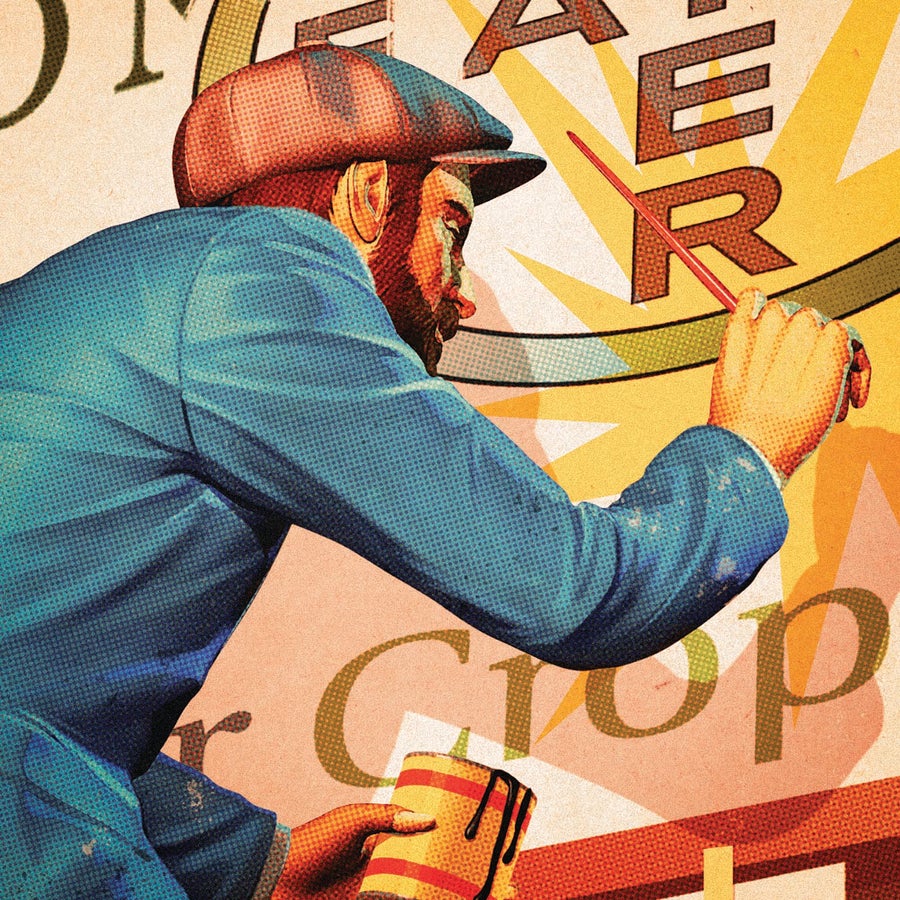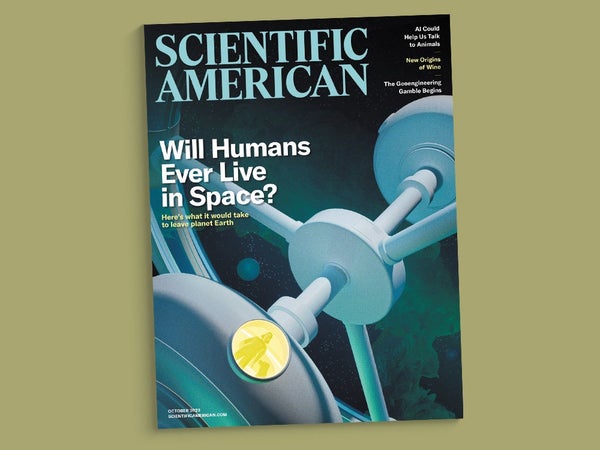You may have noticed we have a new logo. How do you like it? We're excited to present our redesign with the October print issue of Scientific American. We have new color schemes, updated graphics styles and fonts that are easy on the eyes. We've rearranged the order of our print sections to start with nuggets of news in Advances, which we follow with in-depth articles and then our columns and other departments. A new Contributors page will introduce you to some of the researchers, writers, artists, photographers and data analysts featured in each issue. It's not a radical change from our previous design, but we think it's fresh and lively and inviting. And we all love the letter C in Scientific American's new logo—it's swoopy and crescent-moon-y.
Michael Mrak, our creative director, ran the redesign project with help from design firm Pentagram and a host of staff. It was a fun process. We spent hours studying mock-ups, squinting at fonts, discussing what we want to convey with our “look,” making and remaking decisions, fiddling with kerning (the spacing between letters), and debating whether the short form of our name used in online platforms should be SA or SciAm. (We are going with SciAm.)
It's been a big year for us at Scientific American. We relaunched our daily newsletter, and people tell us they're enjoying how it delivers highlights and recommendations to their inboxes. We started a podcast series called “Science, Quickly” that is an absolute delight. (Our senior space and physics editors, Clara Moskowitz and Lee Billings, could recently be heard debating whether time travel is possible given the latest physics of wormholes and multiverses.) New episodes drop three times a week, and you can subscribe through any of the big podcast platforms. We've hired some brilliant editorial staffers to increase the number of news, commentary, graphics, multimedia and feature stories we publish online. Thank you for your support of Scientific American in whatever forms you enjoy our work.
On supporting science journalism
If you're enjoying this article, consider supporting our award-winning journalism by subscribing. By purchasing a subscription you are helping to ensure the future of impactful stories about the discoveries and ideas shaping our world today.
In our cover story, we ask (and pretty much answer) whether humans can ever live off-planet. It's fascinating to think about all the ways our bodies and minds are adapted to life on Earth. Science journalist Sarah Scoles introduces us to “analog astronauts” who participate in mock space missions and the scientists who are looking for ways to overcome obstacles to space life. But there is no Planet B.
Several of us have had the song “Talk to the Animals” from the 1967 film Doctor Dolittle stuck in our heads while working on this month's story about how artificial intelligence could help us do just that. Investigative journalist Lois Parshley explains how scientists and AIs are trying to decipher sounds from whales, birds, dogs, and more.
The history of wine has been rewritten recently, and our senior sustainability editor Mark Fischetti and graphic artist Francesco Franchi delve into the origins and routes of grapevine evolution.
The debate over whether to use geoengineering to manage the climate crisis has quickly advanced this year, with companies already testing methods to add particles to the atmosphere to block some heat from the sun. Science writer Douglas Fox shows the stakes of this gamble and why it's being taken increasingly seriously.
Our Innovations In package of stories on environmental health equity explores opportunities for improving lives around the world with new efforts to fight air pollution, snakebites, heat islands, and more. It begins with a great conversation with Robert D. Bullard, the father of environmental justice and one of the most influential social scientists of our time.
We hope you enjoy this month's offerings and our new look.

Credit: Tavis Coburn
Contributors to Scientific American’s October 2023 Issue
Writers, artists, photographers and researchers share the stories behind the stories
Tavis Coburn Cover of Scientific American
Space travel and sci-fi have always captured Tavis Coburn's imagination. A child of the 80s, he grew up on Star Wars, popular science magazines and comic books. Now as a digital artist based in Toronto (self-portrait above), he paints possible futures with the retro feel of decades past. Recently, while illustrating a new version of The Right Stuff (Tom Wolfe's 1979 book about the pilots who became astronauts for the U.S.'s first human spaceflight), Coburn reflected on the audacity of the first space missions. “The fact that they got those guys up in the air and back with slide rulers and compasses and math in their heads—it's a pretty astounding feat,” he says. For the cover of this month's Scientific American, Coburn turned his eye to the future of space travel, imagining the lives of the first humans to settle down off-world. He sought to contrast advanced technology with the banal monotony of daily life. “Even though the new planet offers awe-inspiring vistas, memories of Earth flood the settlers' minds every day.”
Sarah Scoles Why We'll Never Live in Space
Would you take a one-way trip to Mars? “This used to be one of my favorite questions to liven up a dinner party,” says journalist Sarah Scoles, a frequent contributor to Scientific American, who has written two books about the search for extraterrestrial intelligence. When Scoles was a bit younger and less risk-averse, her answer was always yes. Scoles lives in rural Colorado and enjoys “a little bit of suffering” in her outdoor adventures. But it's unlikely that Martian colonies will be seeking intrepid volunteers any time soon, she writes in this month's cover story. By immersing herself in an “analog astronaut” convention at Biosphere 2 in Arizona and speaking with experts in the field, she grappled with the massive biological, technological and political problems facing humanity's future in space. In the face of galactic optimism, she says, it's easy to forget just how big these hurdles are—and that we have “no guarantee that there's the motivation or ability to actually solve them.”
Francesco Franchi Wine's True Origins
Graphics designer and journalist Francesco Franchi occasionally drinks wine—but only the good stuff. He's more interested in cycling the hills around Milan, Italy, where he lives. The story of the grapes we turn into wine stretches back across the entirety of human history, so Franchi's first task for devising a graphic on their 200,000-year, continent-spanning evolution was to connect time and space on the page, he says. “What I like most is to try to develop stories merging different languages,” using precise combinations of illustration, photography, data and text, he says. “You have to show the relationship, the cause and effect.”
Lois Parshley Talking with Animals
It all began with a mated pair of Sandhill Cranes nesting in the backyard. “We shared our mornings out on my deck,” says Lois Parshley, an investigative journalist. One morning the cranes both began calling—“it was a startlingly loud noise”—for minutes at a time. Then they flew away and never returned. The mystery of what Parshley had witnessed launched her into a feature story about decoding animal communication. Nowadays the field is all about artificial intelligence; it's hard to find researchers who aren't using it, she says. As scientists collect terabytes on terabytes of whale clicks and crow caws, they're hoping that deep learning can find patterns and meaning in the sounds that human beings have always missed. “It's a huge open door,” Parshley says, leading to captivating questions that may change our understanding of how animals experience the world.
